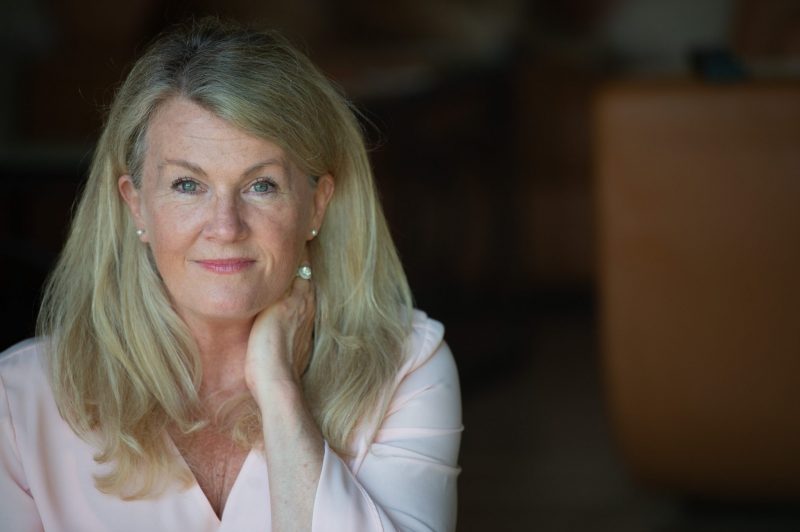Modern Mysticism

Modern Mysticism
Have you ever thought of yourself as a mystic? You’ll rarely find a mystic calling herself a mystic, though anyone who seeks to experience the Divine on a personal and intimate level could be on the mystic’s path. The path of a mystic is one of the heart; it’s for those who have fallen in love with the Creator or creation itself.
The word Mystic is from the Greek Mystkos – it means the pursuit of direct, personal communion with God. Surprisingly, half of all Americans report they’ve had a mystical or religious experience. Maybe you’ve had the momentary awareness of a deep connectedness with the Divine.
You might have felt a sense of an infinite intelligence or divine love as you watched a sunset, or gazed at a sky full of stars and galaxies, or as you sat by the creek in the canyon. Perhaps it happens while a baby smiles at you with twinkling, loving eyes, or as you gaze at the face of your beloved. It can happen while listening to a string quartet, or during a thunderstorm, or as the birds sing. It can even happen in a dream. Most of us don’t give the experience much significance or even remember it. We simply enjoy it, then dismiss it as a ‘nice feeling’, slipping back into a regular mode of everyday existence.
Mystical experiences don’t happen because we wish them into existence, or because we’re especially spiritual or special. They can happen to anyone, anytime and can even happen after a shock or loss in one’s life.
Experienced by the religious and nonreligious alike, this wonder requires no arduous training, and it never leaves behind that feeling of misery and dejection. It can last anywhere from a few seconds to a few days. We can’t wish these mystical experiences into happening or make them last longer than they do. Teresa of Avila says the same about her ‘transformative union’, the ecstatic experience she sometimes had while praying.
You might feel carried away or that you’ve lost your sense of self, but at the same time you feel truly present and clear. Your heart expands and embraces everything, great and small, every pebble on the trail and every star in the sky, including things near and far, and in the past and future. It can be a glimpse that there is more to life than meets the eye, or any of our senses for that matter. It’s a spontaneous moment of grace: one’s heart is touched and opened, it’s blissful, and there is a deep peace. It can be overwhelming, eliciting tears and laughter at the same time. Even though all one’s problems remain unsolved, and all one’s questions remain unanswered, everything suddenly makes sense.
A mystical experience can be marked by these common features:
- It’s expansive and transcends time and space.
- One’s self-image is overshadowed by the experience of the Divine.
- There’s a total abandonment of consciousness of the senses and material reality.
- There’s a realization of the perfection of life and intelligence of creation.
- There’s a sense of sacredness and a realization of deep inner peace.
- There’s a deep sense of interconnection with the whole universe and its Creator.
Whether Hindu, Christian, Muslim, Sufi, Buddhist, Jew, Quaker, Agnostic or Atheist, a mystic is one who listens to that call and sets out on a path that can ultimately stitch their awareness to that of the Divine.
As the Gospel of John says in the Bible, “There is a light which enlightens every human being ever called to life, and this light within us, if we attend to it and accept it, transforms us into the offspring of God.”
Thomas Aquinas, an Italian Catholic priest, defined mysticism as the “experiential knowledge of God.” This experience is said to be impossible to achieve and maintain by sheer will or by thinking about it. And reading or hearing about an experience is very different from having one.
Hildegard of Bingen, the 12th century nun, who composed beautiful melodies still used today, had visions of Divine light from a young age. Paul, on the road to Damascus, saw a light that blinded him for three days and announced itself to be Jesus. Brother Lawrence of the Resurrection, a 17th century mystic, perceived the pots and pans he had to clean every day in the monastery kitchen as indistinguishable from the sacred vessels of the altar.
Joan of Arc, a peasant girl who lived in the 1400’s, heard the voices of Saints and had visions from God that told her to recover her homeland, France, from English domination late in the Hundred Years’ War. Francis of Assisi experienced a heavenly melody played by an angel, and had an awakening simply looking into the night sky. Thomas Aquinas found God’s strength in the ringing of the church bells. 17the Century Japanese Poet Matsuo Basho said, “The temple bell stops but I still hear the sound coming out of the flowers.” Catherine of Siena sensed celestial perfumes. Others taste the sweetness of the Divine nectar of the Lord or feel the contact of love.
We’ve heard of many of these mystics not because they’re seeking fame or fortune, but because once they’ve had the direct experience of God, they often become missionaries. It’s not the other way around for a mystic. This awakening can be described in many ways:
- Hassidic Jews describe it as “absorption within God’s Infinite Light”
- Hindus and Buddhists call it Samadhi or Nirvana – the transcendence of the world of form and phenomena – and the experience one’s blissful true nature.
- Zen Buddhism calls it Satori or Kensho – A moment of awakening to the deep intrinsic connection to the world.
- Taoists describe it as Tao or The Way.
- And Quakers call it “Seeing the Light”, or “that of God”, in everyone.
Today, as in history, mystics and mystic traditions are often treated skeptically. Perhaps it’s because it’s difficult to prove they’ve really had the experience. But it isn’t really the experience that matters anyway. What does matter is the quality of life that follows the experience. The initial experience is easy, but staying on the path of the mystic is a challenge.
What is the mystic’s path?
Although mystics might at first follow traditional religious practices, a mystic’s path is far from formal. The path begins with moving away from the hypnosis of the world of social conditioning and establishing an expanded consciousness and a realization of the Divine’s presence, outside of what we might have been used to.
The path doesn’t require gaining more knowledge from going to one or two self-development classes, or trying to think your way into a Divine or ecstatic state. Or to “fake it till you make it.” Or signing up to volunteer tirelessly for one charity after another.
Faith and patience are required on this path. A mystic surrenders without a plan for where the path might lead or how long it will take. The evolution of one’s awakening requires purification and practices. Self-knowledge and Divine communion is the ultimate goal.
When we turn the attention inward, we begin with an essential practice of establishing silence. The Creator can commune with us in many ways but his/her first language is one of silence: not an external hush in the physical realm; I’m talking about an inner silence, a silence of the heart and of the mind. This inner silence becomes established and can actually be maintained in the midst of physical noise, if necessary. More often than not, meditation and prayer are the practices of choice to develop it: silent sitting meditation, mantra meditation, centering prayer, contemplative prayer and indigenous prayer practices.
Teresa of Avila gave this advice to her Sisters:
“Some books on prayer tell us where one must seek God.
Within oneself, very clearly, is the best place to look. “
The 13th century Sufi poet Rumi insisted poetry and dance were a path to God. His ecstatic poetry makes him one of the most popular poets in the world:
Secretly we spoke, that wise one and me.
I said; Tell me the secrets of the world.
He said, Shhh… Let silence tell you the secrets of the world.
John of the Cross, a Spanish Carmelite priest of the 16th century, reveals his way in these four lines in which he reminds us to drop all attachment to the constant activity and sensory input of the world:
“Creation forgotten,
Creator only known,
Attention turned inward
In love with the Beloved alone.”
Thomas Merton, a 20th century Trappist monk, describes the ego as “the one insuperable obstacle to the infused light and action of the Spirit of God.” The settled mind begins to be the reference point for our lives, rather than the ego, our attachment to our positions and possessions, our self-image and labels and limited view of the world.
That’s probably why some paths include giving up personal given names associated with the ego structure and taking on a new name associated with desired spiritual virtues. There can be rites, rituals, or initiations. And then there is the discipline of living in religious communities that include practices of inner silence and celibacy. In the Catholic and Hindu tradition there is fasting and mortification. The Indian teacher Ramana Maharshi and others pursued the path of knowing the Self or Soul or Atman through self-inquiry, asking the questions “Who am I?” and “From where did that thought arise?” Less popular paths use psychedelic drugs to break down the barriers of the solid reality and the separate sense of “I”.
Often one can be blinded by impatience and demands for speedy evolution and instant gratification. The ego wants to fulfill its desire to achieve a certain expanded awareness within the shortest possible time. Impatience causes disharmony and imperfection. Real progress in spiritual things comes gently, imperceptibly, and in its own time. A flower doesn’t blossom before its time. We have to keep ‘doing the dishes’ as they say.
Labels, thoughts and cravings and dislikes, begin to fade with our practice and the ego begins to loosen its grip. Preoccupation with the past and future and the means and labels by which we identify ourselves diminish. Our view of the world and ourselves expands to include everything, including the perfection of the Creator and creation.
Each moment becomes more precious, and we are more present to each and every one. This is a way to live fully. Eckhart Tolle in his book, A New Earth, suggests that our task in this lifetime is to awaken to our awareness. Then, once we become aware of it, to direct it to the present moment.
When our awareness is focused everywhere but here, thinking about many occasions, planning and thinking about living, we can miss the moments of our life as they come and go. This moment is where our awareness meets our life, and when we are distracted, we could be in danger of never really appreciating our lives.
It is in the present moment that we experience the ecstasy, and hear the wisdom of the Divine’s presence. Practicing being in the moment prepares us to receive the voice of God, and to experience the soul’s union with God. One way to train our awareness is to turn our attention to our breath, or to pay attention to how our body feels, one moment after another. Our body and our breath are always in the present moment. God begins to be realized as the one actuality or omnipresent reality – here, always and everywhere.
As Helen Keller said,
“The best and most beautiful things in the world cannot be seen
or even touched. They must be felt with the Heart.”
With present-moment awareness and an inner stillness, we become internally spacious and can hear or feel the universal and eternal voice. Our hearts open more and more, and we feel intimate and deeply connected with everything, developing a reverence for all life and nature. We are touched by a compassion for ourselves and others, and all of creation. Equanimity develops. We begin the dialogue with the Divine. We listen closely and respond to the world from there. We know there’s a plan for our lives and we are on the right track.
The Divine and creation becomes the supreme object of love; the soul’s companion, teacher, and lover. Ramakrishna, an Indian saint who lived in the 1800s, often went into ecstatic states in his devotion to the Divine Mother.
Ammachi, or Mata Amritanandamayi the hugging saint, describes her union with the Divine in this way:
“Everything seems permeated with divinity. Every blade of grass and every sand particle is filled with Divine energy. The awakened one has the attitude of deep reverence and humility towards all of creation, because once you go beyond the ego, you are nothing — you are infinite nothingness filled with Divine consciousness. When you have the attitude of constantly bowing down with a feeling of humility towards all of existence, that existence flows into you. You experience that everything is part of you, nothing is separate.”
Teresa of Avila describes the relationship this way:
“It’s like the experience of two persons here on earth who love each other deeply and understand each other well: even without words. Just by a glance, it seems, they understand each other.”
A mystic begins to live between two worlds: turning inward in loving adoration towards God with an established core inner silence born out of practice, and then becoming missionaries. They go out to tell the secrets of God’s love to others through compassionate action as Mother Teresa did, or by revealing their ecstatic direct experience of God in their love poems and songs:
India’s favorite poetess Mirabai, ecstatic with the love of God, wrote this:
Unbreakable, O Lord,
Is the love
That binds me to You:
Like a diamond,
It breaks the hammer that strikes it.
My heart goes into You
As the polish goes into the gold.
As the lotus lives in its water,
I live in You.
Like the bird
That gazes all night
At the passing moon,
I have lost myself dwelling in You.
O my Beloved – Return
As the 12th century Persian poet Hafiz suggests:
Know the true nature of your beloved.
In his loving eyes, your every thought, word, and movement is
always, always beautiful.
And Rumi’s poem, A Smile and A Gentleness reveals it this way:
There is a smile and a gentleness inside.
When I learned the name
and address of that, I went to where
You sell perfume. I begged you not
to trouble me so with longing. Come
out and play! Flirt more naturally.
Teach me how to kiss. On the ground
a spread blanket, flame that’s caught
and burning well, cumin seeds browning,
I am inside all of this with my soul.
Modern Day Mystics
There is the misconception that mystics are hidden away in monasteries or live in remote mountainous areas; that’s not entirely true. Once they’ve awakened to the Divine and their consciousness has been united with the Divine, the mystic sets out into the everyday world. It’s not that they put the title “mystic” on their business card. Though some people in Sedona actually do.
Mystics live compassionately in service to others. They have boundless energy to serve as a mediator or minister between humanity and eternity. They teach, share, and bear witness to life in its entirety, and as they do, they reveal and perhaps awaken our own relationship to the Divine.
Visionaries, prophets, and mystics have always been a vital yet mostly unacknowledged part of the human race. Their job has been to know a ‘Truth’ ahead of others, then impart it in their own unique fashion to the culture of their time. They have to shed what Deepak Chopra calls, “the hypnosis of social conditioning” as well as the habits of the mind. They see things clearly from a new perspective and then emerge to transform the way of things.
They’re peacemakers, pioneers, scientists, discoverers, religious or social reformers, artists, or national heroes or heroines. They are sharply intuitive, yet practical, and clearly see the realities of the culture which surrounds them. They render services of practical compassion to their fellow creatures. They walk among us. As Khalil Gibran, Lebanese poet and author of The Prophet, once wrote, their “work is love made visible.”
It’s hard for us to judge who is and who isn’t a mystic, but consider these folks:
Mary Magdalene, Jesus of Nazareth, Buddha, Mohammed, Francis of Assisi, Teresa of Avila, Hildegard of Bingen, Joan of Arc, Lao Tzu, Jalāladdīn Rumi, Hafiz, John of the Cross, Basho, William Blake, Ramakrishna, Rabindranath Tagore, Gandhi, Ralph Waldo Emerson, Thomas Merton, and Thich Nhat Hanh, just to name a few.
Ammachi, or Amma the hugging saint, in Southern India is said to be a mystic. She champions more humanitarian projects than anyone I have ever met. She was born in 1953 in a small fishing village, her name was Sudhamani. She left school at the age of 9 to take care of her family full time. As part of her chores, she gathered food scraps from neighbors for her family’s cows and goats. She was confronted with the intense poverty and suffering of others. She would bring these people food and clothing from her own home. Her family scolded and punished her. It didn’t matter to her. She fell in love with God. Her endless devotion led her into states of ecstasy. Her God was in the form of the Divine mother.
Soon, she began to spontaneously embrace people to comfort them in their sorrow. In conservative south India, it was not permissible for a 14-year-old girl to even touch others, especially men. Despite her parents’ objections, Amma continued. She said, “I don’t see if it is a man or a woman. I don’t see anyone different from my own self. A continuous stream of love flows from me to all of creation. This is my inborn nature. The duty of a doctor is to treat patients. In the same way, my duty is to console those who are suffering.”
Today, when she isn’t in prayer and meditation or consoling others, she devotes her energy to charitable projects: she’s built 100,000 homes for the homeless, set up hospitals offering free medical care, established universities, schools and orphanages for the poor and homeless and disabled, and created environmental protection groups. She never stops. I’ve seen her individually embrace 5,000 people day after day, sometimes blessing over 10,000 at a sitting, 20 hours at a time. Her radiance and compassion reaches across the religious and social boundaries; she hugs everyone who comes to her: men, woman, children, religious leaders, politicians, the sick, the dying, and the insane: 29 million people throughout the world have been embraced by her. Her hug is said to purify and heal the body, mind, and heart.
Ammachi says,
“There is one Truth that shines through all of creation. Rivers and mountains, plants and animals, the sun, the moon and the stars, you and I—all are expressions of this one Reality.”
There’s also the housewife from Barstow, California, Byron Katie. Katie, as people call her, had a challenging childhood, and a difficult mother. As she grew older she became alcoholic, had an eating disorder, and had a difficult time leaving her house. Her suffering and sorrow led her to surrender and she ended up at a halfway house. Her self esteem was so poor that she didn’t feel worthy enough to sleep on the bed, so she slept on the floor. One day she woke up and had what is called in Zen Buddhism, a kensho experience, an awakening. She saw into her own nature or true self. She had found peace. She realized up until that time that she had believed her stressful thoughts without question, and they led her to suffering. So after her awakening, as stressful thoughts arose, they were met with a series of questions: the first one being, “Is it true?” She has since shared this technique of self-inquiry called “the Work” with millions of people around the world. It is a meditation on getting clear.
Katie says,
“I found a joy within me that has never disappeared, not for a single moment. That joy is in everyone, always.”
Perhaps Deepak Chopra is a mystic. He was a young man when he came the U.S. from India for his residency in a New Jersey hospital. By his own account, he wasn’t particularly spiritual and in fact, was less so when stressed. He found his way to meditation class to handle it and through the practice of meditation he began to awaken to new possibilities in healing and the mind-body connection. He listened to and followed his calling which led him to a completely unplanned future of fame and popularity.
He has certainly helped to revolutionize the modern-day attitude toward health, introducing meditation, and the mind-body connection. He has written over 50 bestselling books and keeps a schedule that most people could. And although he wears sparkly red glasses, his books seriously outline the path to love, perfect health, spiritual laws, and how to know God. He’s ushered many people onto their path to awakening.
Though I worked with him for eight years and continue to see him when he comes to Sedona, my relationship with him was and is more spiritual than personal. There was a sense that we were doing more, that we were making a difference in the world by helping people to find their own path to healing.
The Dalai Lama embodies the qualities of an enlightened being described in ancient texts: equanimity, magnetism, fearlessness. He’s a visionary, fully awake and aware, joyous, powerful and compassionate. He’s showing the world that there can be compassion in the face of hatred, compassion in the face of threats, and peace in a world of suffering. He perseveres even though he and other Tibetans have been exiled from their own country, and many of his followers have been killed. He is transforming the world through the message of compassion, meditation, and forgiveness. This is why he insists now that his nuns and monks move into the world, and to do that, they need to speak English. I was one of the fortunate ones to be able to teach them in Dharamsala.
The Dalai Lama says,
“There is no need for temples, no need for complicated philosophies. My brain and my heart are my temples; my philosophy is kindness.”
Mother Teresa had just died the first time I headed to India in September of 1997. As we drove along the dirt roads I saw outside the door of every hut, a primitive altar complete with fruit, flowers, and a burning candle which lit a page torn out of the newspaper with her photo. This is how Hindus treat their saints.
From nothing but faith and hard work, Mother Teresa founded the Missions of Charity in Calcutta where she ministered to the poor, sick, orphaned and dying. The hospices, orphanages and leper houses opened all over – and by the time she died, 610 missions were operating in 123 countries. She had even won the Nobel Peace Prize.
A journalist once asked Mother Teresa how she ever managed to find the time to accomplish so much. She had been working every day for over 45 years. Her answer was simple: “I pray for six hours every day.” She outlines her path here:
The fruit of silence is prayer.
The fruit of prayer is faith.
The fruit of faith is love.
The fruit of love is service.
The fruit of service is peace.
A mystic’s life is characterized by enhanced vitality, productivity, serenity and joy as the inner and outward aspects harmonize in union with God and God’s will. They are creative, fearless, and powerful, and walk in this world with a great sense of reverence, wonder, delight, humility and compassionate action. They see God in everyone and everything. They are peaceful.
My prayer is that each one of us can get there from here.
Sarah McLean
Sarah McLean is an acclaimed teacher and thought leader who is determined to create more peace on this planet by helping people wake up to the wonder and beauty of their lives and the world around them through the practices of meditation and mindfulness. She inspires audiences everywhere blending the spirit of Zen wisdom with Vedic knowledge and self-inquiry. She helps demystify meditation and makes it accessible to anyone. It was over 30 years ago when she began her daily meditation practice, and moved in to a Transcendental Meditation community. There, she received advanced training in meditation and studied Ayurveda. Since 1993, when she became the education director for Deepak Chopra’s Center for Mind Body Health, she's been teaching contemplative practices and mind/body health. In 1997, she went to India to live in a traditional ashram in India, When she returned to the States, spent two years as a resident trainee in a Zen Buddhist monastery. She fell in love with Self-inquiry and served as the director of Byron Katie's School for the Work. In 2012, she founded the McLean Meditation Institute, home of the Meditation Teacher Academy which certifies meditation and mindfulness teachers through its 300-hour teacher training program. Her bestseller, Soul-Centered: Transform Your Life in 8 Weeks with Meditation, and her most recent book, The Power of Attention: Awakening to Love have received rave reviews. She now lives in Santa Barbara, California where she trains meditation teachers and offers online classes and lives a life she loves.






